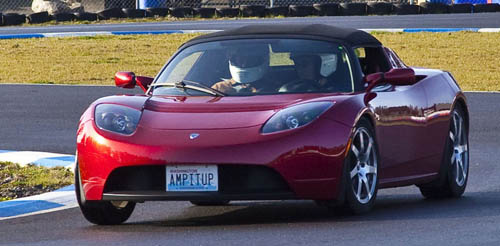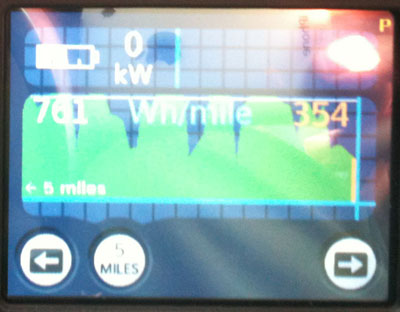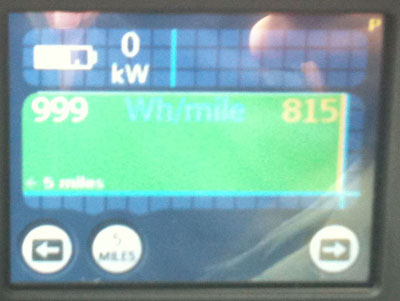On March 17, six Seattle-area Tesla owners joined the Evergreen Lotus Car Club
for a track day at Pacific
Grand Prix, the new smaller track next to Pacific Raceways in Kent,
WA. The folks at Pacific Grand Prix were excited to have a bunch of Tesla show up. We were
treated to unseasonably nice weather, clear and sunny except for a brief
hail storm.
Trevor Cobb of the ELCC did a wonderful job of organizing the event and we really appreciate his invitation to the Tesla cousins.
 (photo courtesy of David Caley)
(photo courtesy of David Caley)
The track is 30 feet wide and 0.8 miles long. It's used for go cart rentals as well as track days for full size cars. As you can see from their web page, the track is all about turns with just a couple of short straightaways, so the speeds are kept under control. There were no timers on the track, so it was all about learning the track and improving your own driving. I did some autocrossing in the mid-90's, so this was somewhat familiar territory, although less forgiving of big mistakes. (The day went fine, the only notable off-course driving was a Lotus driver who sprayed dirt all over the track with no harm done to car or driver.)
A couple of months ago, the Pacific Grand Prix folks attended a Seattle Electric Vehicle Association meeting to let the community know they are supportive of EVs. At that meeting, Daniel Davids, long-time local EV advocate and now president of Plug-in America, offered up some tips to the group from his extensive track-driving experience. So, when I got the email from Trevor inviting the local Tesla owners to join in on their track day, I offered to Daniel that we could split the driving if he'd give me some pointers. He accepted.
We arrived at the track at 8:00 am, drivers meeting at 8:30 and the first group hit the track at 9:00. The second group was the six Roadsters. We got 15 minutes of driving, then about an hour wait between runs.
I took the first run and Dan talked me through it, helping me to improve on each lap. Between runs Trevor offered up some helpful tips also. On the second run, Dan showed me what a Roadster can do with a skilled driver behind the wheel. It was a little frightening at first, then I could see that he knew what he was doing and that I was in a for a real treat. Dan just swept through the turn combos where I was struggling with the steering wheel. He made everything look smooth and easy, except for figuring out how the passenger is supposed to hang on through all of that lateral acceleration without a steering wheel to grip. After seeing it done well, my run in round 3 was greatly improved.
Depending on the driver, each run was consuming between 3 and 7 ideal miles per driven mile. On my first tentative run, I used 21 ideal miles in 7.5 actual miles. Rich, an accomplished track/autocross driver, used 36 ideal on that same run. Dan managed to burn 35 ideal miles on the second run, even though he exited the track after only 5.2 miles.
It was also fun to compare the recent energy use screens between me and Dan. Here's mine after the third run:

You can see I averaged 761 Wh/mi over the last five miles after the cool down lap and exit from the track. In normal driving, the average is more like 260 Wh/mi, with occasional green spikes for acceleration, but here it's solid green with dips for occasionally getting off the pedal. Doing the math from the trip meter says I used 841 Wh/mi for that run. Now, here's Dan's graph from the second run:

There is no letting off the pedal for Dan, at least not for long enough to show up on the graph, and the graph is pegged at 999 Wh/mi. Doing the math from the trip meters says Dan averaged 1,423 wH/mi on that run.
There was supposed to be 240V charging at the track, but there was a problem with that circuit, so we searched out all of the 120V outlets around the track and charged as much as we could. Even with that little charging, I had plenty of charge for the 25 miles home when I had to leave around 3:00, I could have easily stayed for the last run. Others who had a longer drive were charge constrained and had to leave early. The track folks are very open to getting better charging installed, so future events should be easy for everyone.
Trevor Cobb of the ELCC did a wonderful job of organizing the event and we really appreciate his invitation to the Tesla cousins.
 (photo courtesy of David Caley)
(photo courtesy of David Caley)The track is 30 feet wide and 0.8 miles long. It's used for go cart rentals as well as track days for full size cars. As you can see from their web page, the track is all about turns with just a couple of short straightaways, so the speeds are kept under control. There were no timers on the track, so it was all about learning the track and improving your own driving. I did some autocrossing in the mid-90's, so this was somewhat familiar territory, although less forgiving of big mistakes. (The day went fine, the only notable off-course driving was a Lotus driver who sprayed dirt all over the track with no harm done to car or driver.)
A couple of months ago, the Pacific Grand Prix folks attended a Seattle Electric Vehicle Association meeting to let the community know they are supportive of EVs. At that meeting, Daniel Davids, long-time local EV advocate and now president of Plug-in America, offered up some tips to the group from his extensive track-driving experience. So, when I got the email from Trevor inviting the local Tesla owners to join in on their track day, I offered to Daniel that we could split the driving if he'd give me some pointers. He accepted.
We arrived at the track at 8:00 am, drivers meeting at 8:30 and the first group hit the track at 9:00. The second group was the six Roadsters. We got 15 minutes of driving, then about an hour wait between runs.
I took the first run and Dan talked me through it, helping me to improve on each lap. Between runs Trevor offered up some helpful tips also. On the second run, Dan showed me what a Roadster can do with a skilled driver behind the wheel. It was a little frightening at first, then I could see that he knew what he was doing and that I was in a for a real treat. Dan just swept through the turn combos where I was struggling with the steering wheel. He made everything look smooth and easy, except for figuring out how the passenger is supposed to hang on through all of that lateral acceleration without a steering wheel to grip. After seeing it done well, my run in round 3 was greatly improved.
Depending on the driver, each run was consuming between 3 and 7 ideal miles per driven mile. On my first tentative run, I used 21 ideal miles in 7.5 actual miles. Rich, an accomplished track/autocross driver, used 36 ideal on that same run. Dan managed to burn 35 ideal miles on the second run, even though he exited the track after only 5.2 miles.
It was also fun to compare the recent energy use screens between me and Dan. Here's mine after the third run:

You can see I averaged 761 Wh/mi over the last five miles after the cool down lap and exit from the track. In normal driving, the average is more like 260 Wh/mi, with occasional green spikes for acceleration, but here it's solid green with dips for occasionally getting off the pedal. Doing the math from the trip meter says I used 841 Wh/mi for that run. Now, here's Dan's graph from the second run:

There is no letting off the pedal for Dan, at least not for long enough to show up on the graph, and the graph is pegged at 999 Wh/mi. Doing the math from the trip meters says Dan averaged 1,423 wH/mi on that run.
There was supposed to be 240V charging at the track, but there was a problem with that circuit, so we searched out all of the 120V outlets around the track and charged as much as we could. Even with that little charging, I had plenty of charge for the 25 miles home when I had to leave around 3:00, I could have easily stayed for the last run. Others who had a longer drive were charge constrained and had to leave early. The track folks are very open to getting better charging installed, so future events should be easy for everyone.
